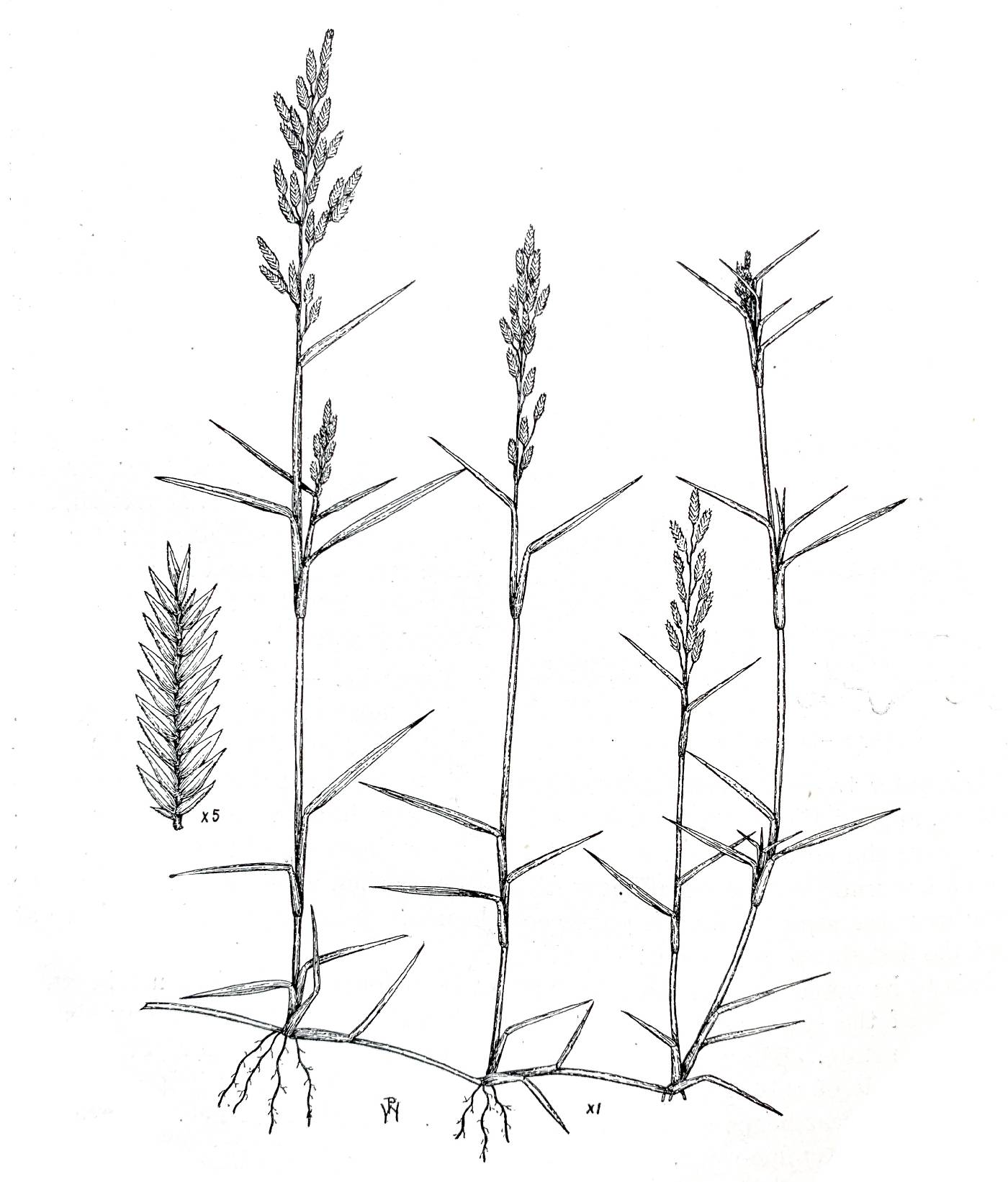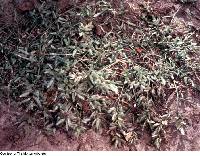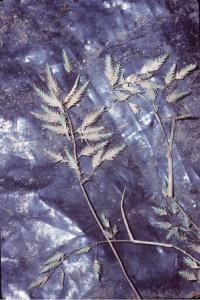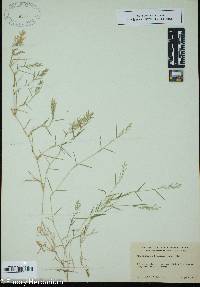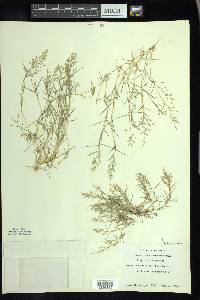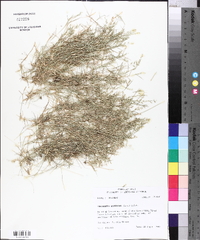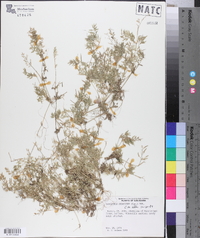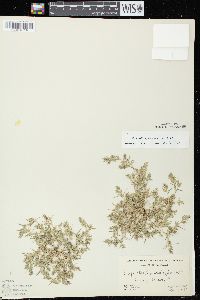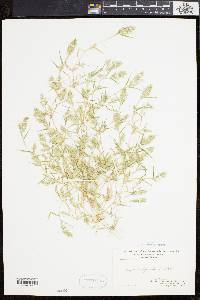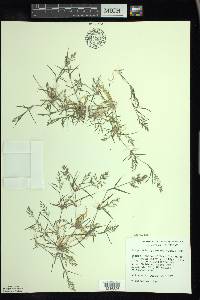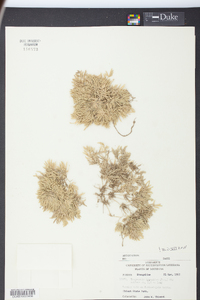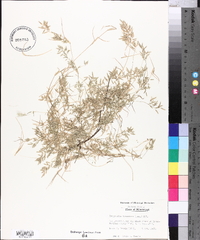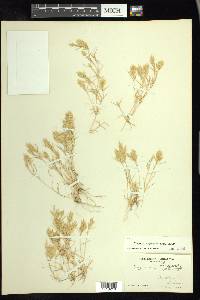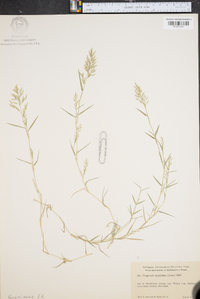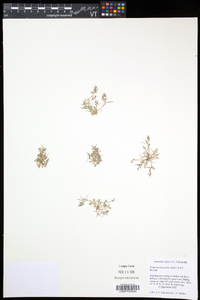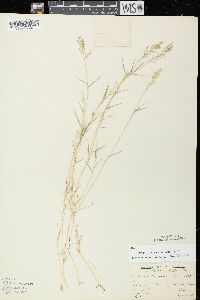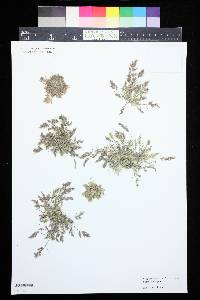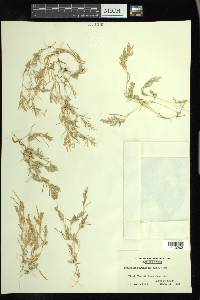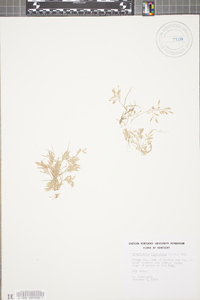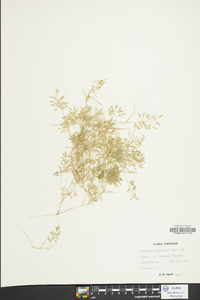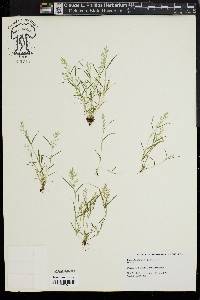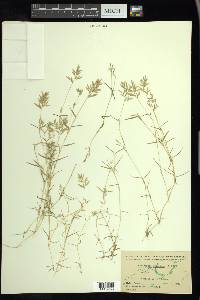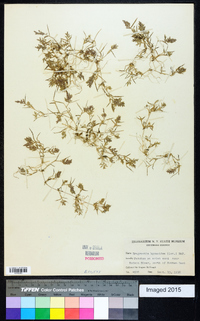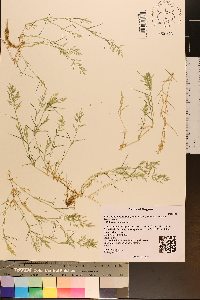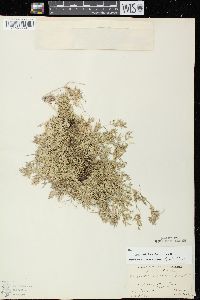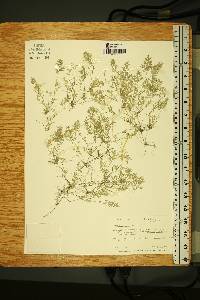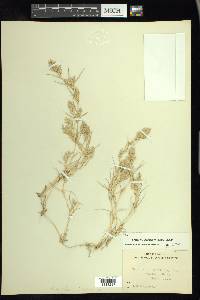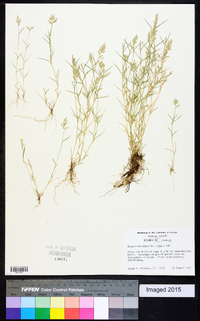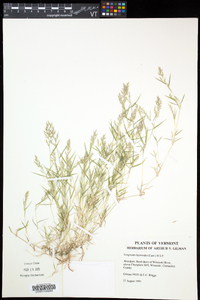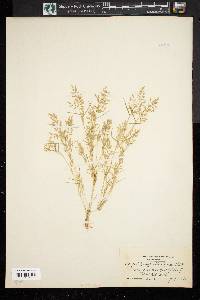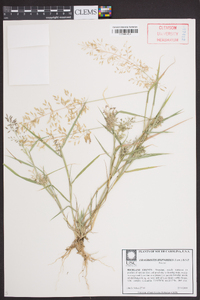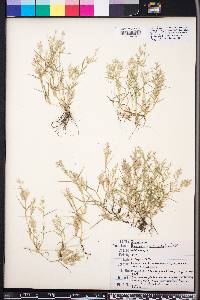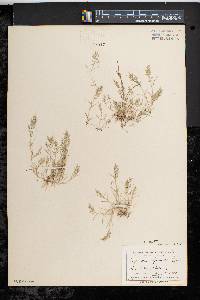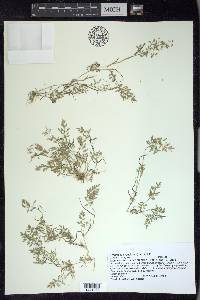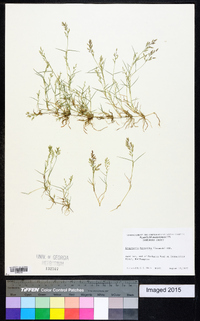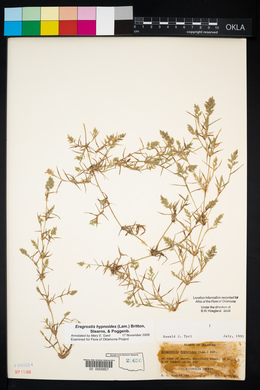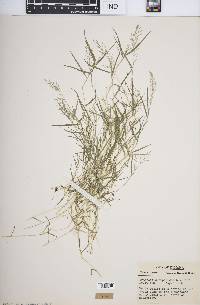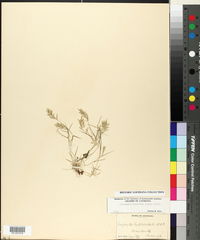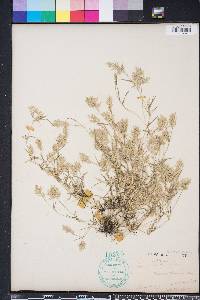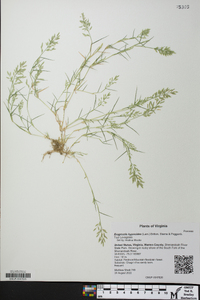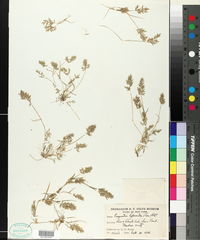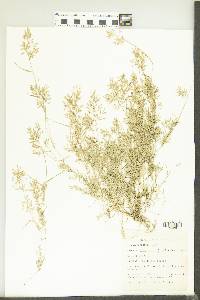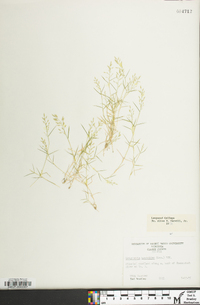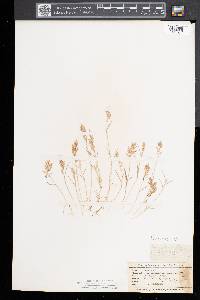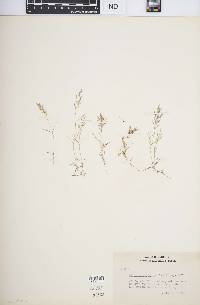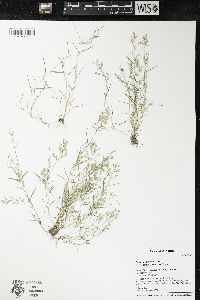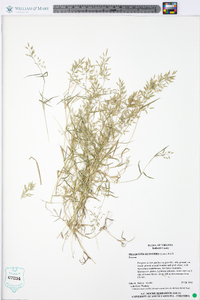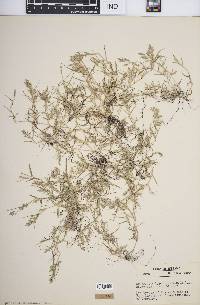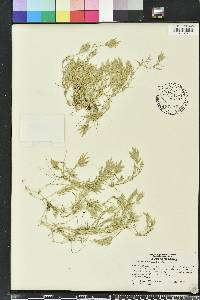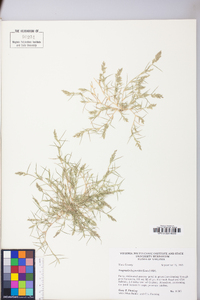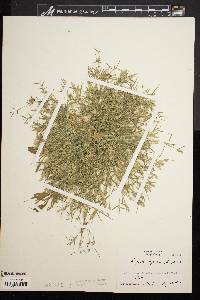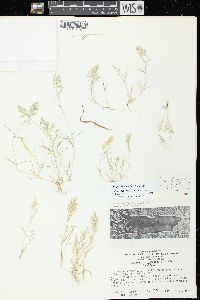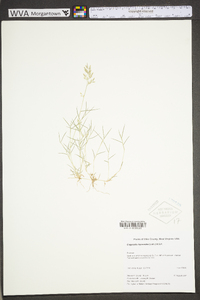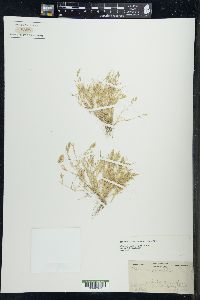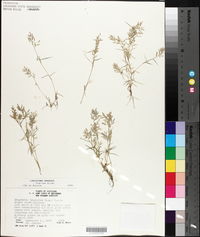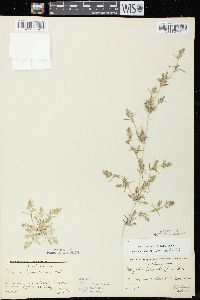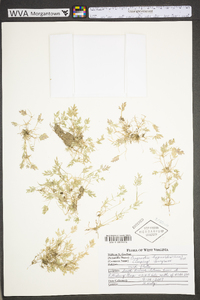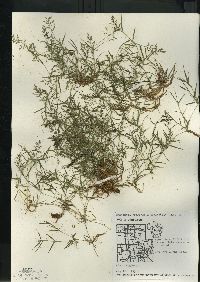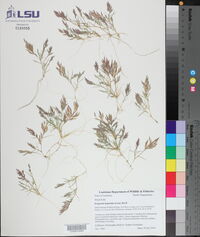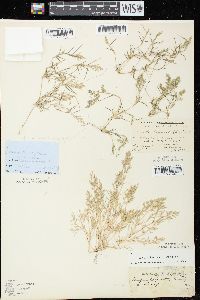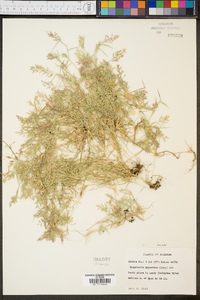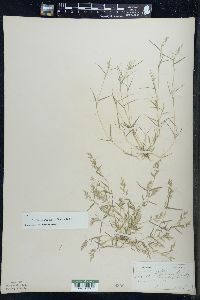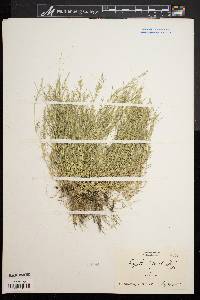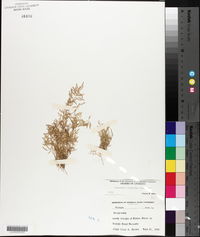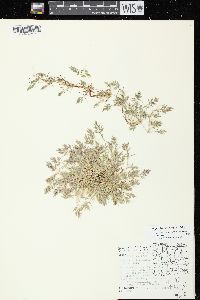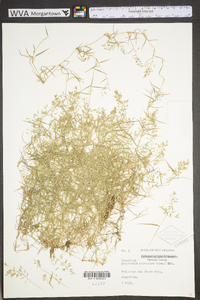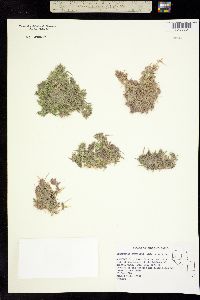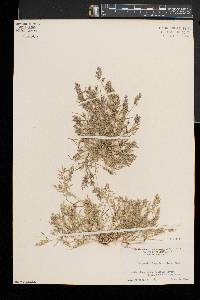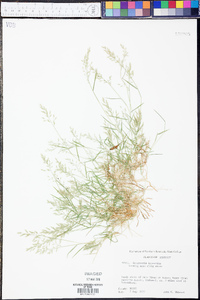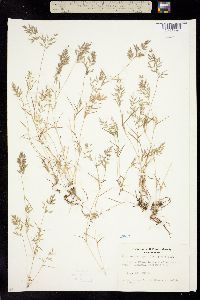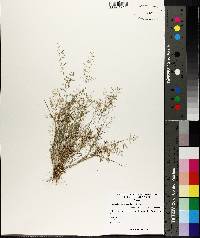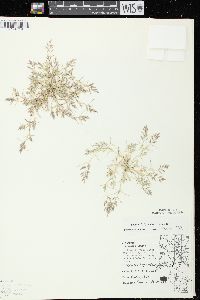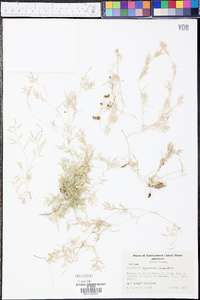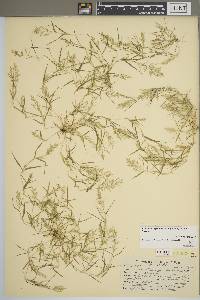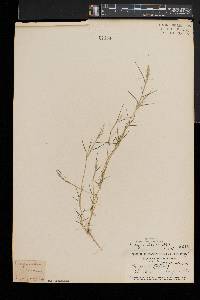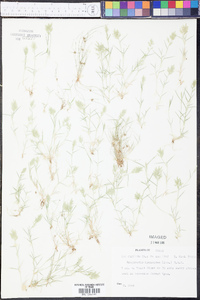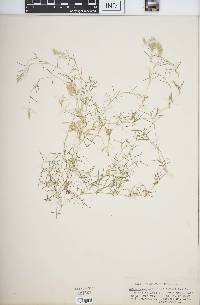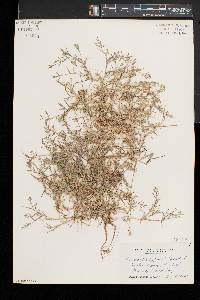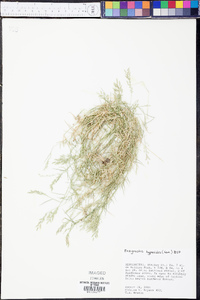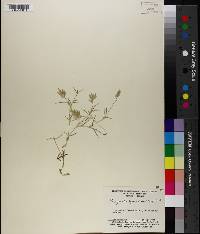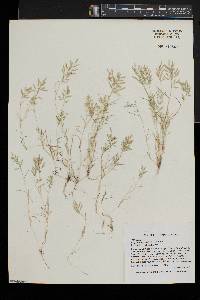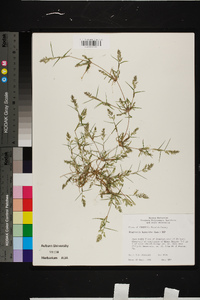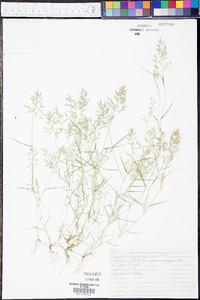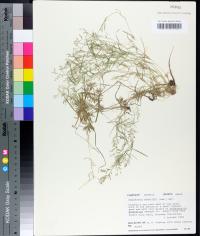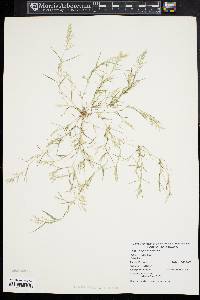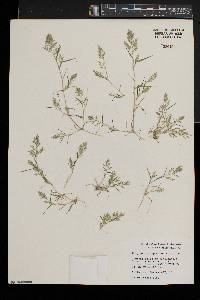
|
|
|
|
Family: Poaceae
Teal Love Grass, more...Éragrostide Hypnoïde, teal lovegrass, Teel Lovegrass
[Eragrostis reptans var. contracta Döll, moreEragrostis reptans var. laxior , Eragrostis reptans var. pygmaea Döll, Eragrostis weigeltiana Bush, Megastachya breviflora E. Fourn., Megastachya corymbifera E. Fourn., Megastachya gouinii E. Fourn., Megastachya hypnoides (Lam.) P. Beauv., Neeragrostis hypnoides (Lam.) Bush, Neeragrostis weigeltiana (Rchb.) Bush, Poa carinata Poir., Poa hypnoides Lam., Poa weigeltiana Rchb.] |
Plants annual; stoloniferous, mat-forming, without innovations, without glands. Culms decumbent and rooting at the lower nodes, erect portion (2)5-12(20) cm, often branched, glabrous or hairy on the lower internodes. Sheaths pilose on the margins, collars, and at the apices, hairs 0.1-0.6 mm; ligules 0.3-0.6 mm; blades 0.5-2.5 cm long, 1-2 mm wide, flat to involute, abaxial surfaces glabrous, adaxial surfaces appressed pubescent, hairs about 0.2 mm. Panicles terminal and axillary, 1-3.5 cm long, 0.7-2.5 cm wide, ovate, open to somewhat congested; primary branches 0.1-0.5 cm, appressed to strongly divergent, glabrous; pulvini sparsely pilose or glabrous; pedicels 0.2-1 mm, ciliate. Spikelets 4-13 mm long, 1-1.5 mm wide, linear-oblong, often arcuate, loosely imbricate, greenish-yellow to purplish, with 12-35 florets; disarticulation acropetal, paleas persistent. Glumes linear-lanceolate to lanceolate, hyaline; lower glumes 0.4-0.7 mm; upper glumes 0.8-1.2 mm; lemmas 1.4-2 mm, ovate, strongly 3-veined, veins greenish, apices acuminate; paleas 0.7-1.2 mm, hyaline, keels scabridulous, apices acute to obtuse; anthers 2, 0.2-0.3 mm, brownish. Caryopses 0.3-0.5 mm, ellipsoid, somewhat translucent, light brown. 2n = 20. Eragrostis hypnoides grows along muddy or sandy shores of lakes and rivers and in moist, disturbed sites, at 10-1600 m. It is native to the Americas, extending from southern Canada to Argentina. Annual mat-forming, runner-bearing herb without glands 2 - 24 cm tall Leaves: with open sheaths that have soft 0.1 - 0.6 mm long hairs on the margins and tip, and ligules that are 0.3 - 0.6 mm long. The blades are 0.5 - 2.5 cm long, 1 - 2 mm wide, flat or with margins rolling toward the upper surface of the midvein (involute), hairless beneath, appressed hairy (to 0.2 mm long) above. Inflorescence: terminal and axillary, branched (panicle), rising above upper leaves, 1 - 3.5 cm long, 0.7 - 2.5 cm wide, egg-shaped, open to somewhat crowded, with hairless primary branches 0.1 - 0.5 cm long. Fruit: a caryopsis, more or less transluscent light brown, 0.3 - 0.5 mm long, elliptic. Culm: 2 - 20 cm long, decumbent, rooting at lower nodes. The erect part is 2 - 20 cm tall, usually branched, and hairless or hairy along the lower internodes. Spikelets: loosely overlapping on a 0.2 - 1 mm long and hairy stalk, greenish yellow to purplish, 4 - 13 mm long, 1 - 1.5 mm wide, linear-oblong, usually arching, laterally compressed. Glumes: transparent, linear-lance-shaped to lance-shaped, single-veined, neither lobed nor awned, with a lower glume 0.4 - 0.7 mm long and an upper glume 0.8 - 1.2 mm long. Florets: twelve to 35 per spikelet, with two brownish anthers 0.2 - 0.3 mm long. Lemma: 1.4 - 2 mm long, egg-shaped with a pointed tip, usually hairless, with three strong greenish veins. Palea: transparent, 0.7 - 1.2 mm long, with a blunt to pointed tip and two minutely rough longitudinal ridges. Similar species: Eragrostis hypnoides is easily distinguished from the other Eragrostis species in the Chicago Region, because it roots at the lower nodes and is mat-forming. Flowering: mid August to late September Habitat and ecology: Muddy, sandy or rocky areas along streams or around ponds that were flooded earlier in the season. Occurence in the Chicago region: native Etymology: Eragrostis is derived from the name of the Greek god of love, Eros, and agrostis, meaning grass. Hypnoides means "like the moss Hypnum." Author: The Morton Arboretum Annual; stems creeping, rooting at the nodes, forming mats, sending up short culms 5-15 cm; lf-blades 1-4 cm נ1-3 mm; infl ovoid to subcylindric, 2-8 cm; peduncle glabrous; pedicels 1-3 mm; spikelets linear, 10-35-fld; fls perfect; lemmas 1.5-2 mm, glabrous, shining, almost hyaline, falling individually from the intact rachilla, on which the paleas persist; anthers 0.3 mm. Mud-flats and sandy shores; throughout most of the U.S. except the arid or mountainous regions, s. to Arg. Gleason, Henry A. & Cronquist, Arthur J. 1991. Manual of vascular plants of northeastern United States and adjacent Canada. lxxv + 910 pp. ©The New York Botanical Garden. All rights reserved. Used by permission. From Flora of Indiana (1940) by Charles C. Deam Infrequent throughout the state but more frequent in the southwestern part where its habitat is more frequent. It is found on sandy or gravelly bars in ditches, creeks, and rivers and on the sandy shores of lakes. It is also found in muddy habitats along streams and in dried-up ponds and sloughs. In the latter habitats it often forms large mats. ...... Indiana Coefficient of Conservatism: C = 3 Wetland Indicator Status: OBL |
|
|
|

